Tennis Ball Size Guide and Dimensions
Tennis balls are spherical balls designed for the game of tennis. Modern tennis balls comprise rubber, pressurized gas, natural felt, and glue. However, traditional tennis balls made in the 1950s were made of leather and tightly stuffed wool. Tennis balls are either pressurized or non-pressurized (skip straight to the tennis ball size charts).
In conformity with the International Tennis Federation (ITF), tennis balls must have a bounce ranging between 53 to 58 inches, when dropped from a height of 100 inches onto a floor made of concrete. To achieve this bounce level, the tennis ball pressure should be 25 to 27 psi.

The international Tennis Federation also specifies that standard tennis balls should have 2.575 inches or 6.5 cm and 6.85 cm or 2.700 inches in diameter. The majority of regulation senior tennis balls are 8.25 inches in circumference. The weight of tennis balls ranges between 56 to 59.4 grams, which is equal to 1.98 to 2.10 ounces.
The International Tennis Federation states that the colors of tennis balls should be yellow or white. In regulated tennis tournaments, tennis balls are yellow. Yellow balls were introduced in early 1970. Tennis balls meant for kids are differentiated with red, green, and orange markings.
Tennis balls are made by several brands, mainly in the USA and Europe.
To play exceptional tennis, you need to use a right-sized ball. Therefore, to improve your game and boost confidence, it’s significant that you understand the ball size you need. Read through this comprehensive guide to learn more.
Jump right into the Frequently Asked Questions
Related: Sports Ball by Size
Tennis Ball Size Table of Contents
Tennis ball size charts
Related: Soccerball Size Guide and Dimensions
Adult tennis balls size chart
| Item | Type 1 (Fast) | Type 2 (Medium) | Type 3 (Slow) | High Altitude |
| Weight | 50.6 – 59.4 g 1.78 – 2.10 oz 0.11- 0.13 lb | 50.6 – 59.4 g 1.78 – 2.10 oz 0.11- 0.13 lb | 50.6 – 59.4 g 1.78 – 2.10 oz 0.11- 0.13 lb | 50.6 – 59.4 g 1.78 – 2.10 oz 0.11- 0.13 lb |
| Diameter | 6.54 – 6.68 cm 65.4 – 66.8 mm 2.575 – 2.7 in | 6.54 – 6.68 cm 65.4 – 66.8 mm 2.575 – 2.7 in | 7.00 – 7.30 cm 70.0 – 73.0 mm 2.8 – 2.87 in | 6.54 – 6.68 cm 65.4 – 66.8 mm 2.575 – 2.7 in |
| Rebound | 138 – 151 cm 1380 – 1510 mm 54.33 – 59.45 in | 135 – 147 cm 1350 – 1470 mm 53.15 – 57.87 in | 135 – 147 cm 1350 – 1470 mm 53.15 – 57.87 in | 122 – 135 cm 1220 – 1350 mm 48.03 – 53.15 in |
| Forward Deformation | 0.56 – 0.74 cm 5.6 – 7.4 mm 0.22 – 0.29 in | 0.56 – 0.74 cm 5.6 – 7.4 mm 0.22 – 0.29 in | 0.56 – 0.74 cm 5.6 – 7.4 mm 0.22 – 0.29 in | 0.56 – 0.74 cm 5.6 – 7.4 mm 0.22 – 0.29 in |
| Return Deformation | 0.74 – 1.08 cm 7.4 – 10.8 mm 0.29 – 0.43 in | 0.80 – 1.08 cm 8.0 – 10.8 mm 0.31 – 0.43 in | 0.80 – 1.08 cm 8.0 – 10.8 mm 0.31 – 0.43 in | 0.80 – 1.08 cm 8.0 – 10.8 mm 0.31 – 0.43 in |
Kids’ tennis ball size chart
| Stage 1 (Green ) Standard | Stage 2 (Orange) Standard | Stage 3 (Red) Standard | Stage 3 (Red) Foam | |
| Weight | 47.0 – 51.5 g 1.7 – 1.8 oz 0.10 – 0.11 lb | 36.0 – 46.9 g 1.3 – 1.7 oz 0.08 – 0.1 lb | 36.0 – 46.9 g 1.3 – 1.7 oz 0.08 – 0.1 lb | 25.0 – 43.0 g 0.9 – 1.5 oz 0.06 – 0.1 lb |
| Size | 6.30 – 6.86 cm 63 – 68.6 mm 2.48 – 2.7 in | 6.30 – 6.86 cm 63 – 68.6 mm 2.48 – 2.7 in | 7.00 – 8.00 cm 70 – 80 mm 2.76 – 3.15 in | 8.00 – 9.00 cm 80 – 90 mm 3.15 – 3.54 in |
| Rebound | 120 – 135 cm 1200 – 1350 mm 47.2 – 53.1 in | 105 – 120 cm 1050 – 1200 mm 41.3 – 47.2 in | 90 – 105 cm 900 – 1050 mm 35.4 – 41.3 in | 85 – 105 cm 850 – 1050 mm 33.5 – 41.3 in |
| Forward Deformation | 0.8 – 1.05 cm 8 – 10.5 mm 0.31 – 0.41 in | 1.4 – 1.65 cm 14 – 16.5 mm 0.55 – 0.65 in | – | – |
Dog tennis ball charts
Chuckit! Ultra Ball size chart
| Small | 2 inches |
| Medium | 2.5 inches |
| Large | 3 inches |
| X-Large | 3.5 inches |
| XX-Large | 4 inches |
The West Jaw Jive Ball Size Chart
| X-Small | 2 inches |
| Small | 2.4 inches |
| Large | 3.25 inches |
The Breath Right Ball Size Chart
| Small | 2 inches |
| Medium | 2.5 inches |
| Large | 3 inches |
| X-Large | 3.5 inches |
The Chuckit! Whistler Ball Size Chart
| Small | 2 inches |
| Medium | 2.5 inches |
| Large | 3 inches |
How to choose the right tennis ball size
Related: Baseball Size and Dimensions
Choosing a tennis ball of the right size can be a bit overwhelming and complex especially for beginners because of the countless types of tennis balls available in the market. You might even be shocked to learn that the International Tennis Federation has endorsed over two hundred tennis ball manufacturers.
A tennis ball’s size mainly varies by age, level of play, altitude, and purpose of use. However, you will find everything you need to know about tennis ball sizes in this comprehensive article.
Kids’ tennis balls sizes
In case you are looking for an ideal tennis ball for a kid, you should go for the slowest balls that simplify the training process as well as protect them from injuries. Luckily, there are tennis balls specifically designed for kids of different age groups.
Beginners (regardless of age) can use these tennis balls as they are soft, thus reducing injury risks.
There are four types of kids’ tennis ball sizes;
- Foam tennis balls
Tennis balls in this category are first in the kids and beginners balls series. They are manufactured from foam. Foam balls are larger than standard balls, slower, and lighter. These features allow kids to play with ease.
They are ideal for kids who are eight years old or below that age. They are 8 cm or 3.15 inches to 9 cm or 3.54 inches in diameter and weigh about 25 to 43 grams.
However, due to their lightweight, they are not optimal in windy surroundings.
- Stage 3 (Red) Standard balls
Red felt tennis balls are slightly bigger than the standard ball but are 75% slower. They are designed specifically for players who are 8 years and below and are just debuting on their tennis adventure.
Their size range from 7 cm (2.76 inches) to 8 cm (3.15 inches) in diameter, and weigh around 36 to 46.9 grams.
In this phase, the aim is to instill crucial skills such as coordination, movement, and confidence and these balls make it all happen.
- Stage 2 (Orange) Standard balls
Orange tennis balls are similar in size to standard tennis balls but are 50% slower. They are ideal for kids whose ages range between nine and ten.
They have 6.3 cm (2.48 inches) to 6.86 cm (2.7 inches) diameters and weigh about 36 to 46.9 grams.
In this stage, kids are introduced to playing on a three-quarter tennis court length. This helps them focus on their speed slowly but supportively while enacting their previously learned skills.
- Stage 1 (Green) Standard balls
This is the last phase for kids before they transition to traditional tennis balls. Green dot tennis balls’ sizes are similar to regular tennis balls but 25% slower. They are designed for kids who are 11 years and above, and who play on full-length tennis courts.
Their diameters range between 6.3 cm (2.48 inches) and 6.86 (2.7 inches) and weigh about 47 to 51.5 grams.
Adult tennis balls sizes
There are four types of adult balls.
- Type 1 tennis balls
These balls are similar to regular duty balls, only that they go through extra stain-resistant treatment. This makes them vulnerable to grass stains and changes color when in contact. They have a diameter of 6.54 to 6.68 cm (2.573 to 2.7 inches) and weigh 50.6 to 59.4 grams.
- Type 2 (Extra Duty Balls)
Extra-duty tennis balls are designed for hard and abrasive court surfaces such as concrete and asphalt. These balls have a loose weave due to the high content of nylon used to make it. The loose weave makes the nylon fluff.
Extra-duty balls are slower in the air but are more durable compared to regular-duty balls. They have a diameter of 6.54 to 6.68 cm (2.575 to 2.7 inches) and weigh about 50.6 to 59.4 grams.
- Type 3 (Regular Duty Balls)
Also known as “soft court”, regular-duty tennis balls are ideal for slower surfaces like clay or indoor courts. If moisture and dirt content is high, these balls tend to fluff up. However, they are made of a thin-felt weave more rigidly around the core to withstand the fluffing.
Regular-duty tennis balls move faster due to minimal air friction but are less durable. They have a diameter of 7 to 7.3 cm (2.8 to 2.87 inches) and weigh about 50.6 to 59.4 grams.
- High Altitude
Like its name, high-altitude balls are designed for courts above 4,000 feet. If you live in a place that high, you should go for pressureless tennis balls. Due to high natural air pressure in places with high altitudes, tennis balls automatically move faster than when in low-altitude places.
These tennis balls have a diameter of 6.54 to 6.68 cm (2.575 to 2.7 inches) and weigh about 50.6 to 59.4 grams.
Dog tennis balls
Dog tennis balls are designed specifically for dog use. They can be thrown afar, bounce higher, withstand sharp teeth, and cleaning them is easy.
You must note that getting your pet bad tennis balls not designed for them is risky. They can harm them in certain ways. Additionally, if you buy smaller or larger balls, you will be forced to buy a particular ball thrower to match or use your arm to throw.
Just as dogs are of different types same case applies to dog tennis balls.
Let’s take a look at some of the best tennis balls best for your pet.
- All-around dog tennis ball
The most ideal all-around dog tennis ball is the Chuckit! Ultra Ball. This ball bounces higher and can be thrown farther compared to a regular tennis ball. Ultra balls are heavy, which allows them to go farther when thrown.
An Ultra ball is hollow, allowing it to float on water. They are available in four sizes as listed on the Chuckit!Ultra Ball size chart above.
- Dog tennis ball for chewers
If you own a pitbull or petal, you know that they play rough. When playing the game of fetch, you’ll find them biting the ball aggressively with their mighty jaws. Jive by West Paw should be your ball of choice.
The Jive ball is made from a heavy rubber free from latex. This ball is so durable that it’s recommended as the most indestructible dog toy.
The West Paw Jive comes in three sizes; X-Small has 2 inches in diameter, Small has 2.4 inches, and Large has 3.25 inches.
For small dogs like chihuahuas, the X-Small size is ideal.
- Dog tennis ball for flat-faced
Flat-faced dogs face difficulties when playing with regular-sized tennis balls. The most ideal ball for such dogs is the Chuckit! Breathe Right ball. This ball is designed to help your dog breathe just fine the ball is in its mouth.
The Breath Right comes in four sizes, small is 2 inches, medium is 2.5 inches, large is 3 inches, and x-large is 3.5 inches in diameter.
- Ideal erratic bounce tennis ball
The phrase erratic ball refers to balls that switch direction when they bounce. It’s excellent for fatiguing hyper dogs and puppies.
They aren’t spherical balls as they have projecting sections and flat areas. Any time the ball lands on these sections, they change course. However, this feature makes them unfit for indoor play.
The most ideal brand for erratic balls is the Chuckit! Erratic ball.
- Squeaky dog tennis balls
We recommend that you choose a squeaky ball with skepticism. However, if you want a squeaky dog toy, then Orbee-Tuff squeak is ideal. Balls from this brand are more durable. The balls are injected with mint oil, thus dogs find it easily by smelling.
The balls are available in one size only. They are 3 inches in diameter.
- Whistle dog tennis ball
The most recommended whistler ball from one of the best brands is the Chuckit! Whistler ball. They have four holes, two to help your dog breathe when the ball is in its mouth, and the other two for producing the whistle sound.
The Chuckit! Whistler is available in three sizes; small is 2 inches, medium is 2.5 inches, and large is 3 inches in diameter.
Learn more about Tennis Ball Size and More (video)
Frequently asked questions
Are there different sizes of tennis balls?
There are different sizes of tennis balls. The standard size as per the International Tennis Federation however is 2.575 inches or 6.5 cm and 6.85 cm or 2.700 inches in diameter.
What size is a tennis ball in mm?
The size of a standard tennis ball in mm is 65 mm or 68.5 mm in diameter.
What is a size 5 tennis ball?
Refers to the Jumbo tennis ball with a diameter of 5 inches.
What is the size difference between a tennis ball and a baseball?
Tennis balls are almost similar to baseballs in size. However, they have different sizes. A standard tennis ball has a diameter of 2.575 inches or 6.5 cm and 6.85 cm or 2.700 inches and is two times lighter than baseballs with a weight of 50.6 to 59.4 grams. A standard baseball has a diameter of 2.85 to 2.95 inches (7.24 to 7.49 cm).
Which tennis ball is best for beginners?
The green balls are ideal for beginners.
Are tennis balls all the same?
No. There are different types of tennis balls available in the market. Some move fast, some bounce higher, some are durable, others wear fast, some are yellow, others white, and the list of differences is endless.
Conclusion
It’s no lie that deciding the right size of tennis balls can be overwhelming. However, worry not for we’ve got you covered! This tennis ball size guide has equipped you with everything you need to know about. Whether you are looking for a suitable basketball size for your child, your dog, or yourself.
We hope that this guide has answered any questions you had concerning tennis ball sizes.
Thank you for reading this article. Feel free to leave any comment or question in the comment box below.
Picture in this post is by Ben Hershey on Unsplash
Related to Tennis Ball Size
- O’Neill Wetsuit Size Charts
- Bocce Ball Court Size and Dimensions
- Pickleball Court Vs. Tennis Court
- Basketball Hoop Rim Size and Diameter
- Ping-Pong Ball Size Chart
- Baseball Size and Dimensions
- Soccerball Size Guide and Dimensions
- Bocce Ball Size Chart
- Basketball Size Guide
- Tennis Ball Size Guide and Dimensions
- Volleyball Size Chart
- Cycling gloves size charts
- Steps Calculator: Steps in a km + Distances
- Jet Ski Size: Which Size Should You Go For?
- Rowing Machine Sizes and Types
- Sailboat Size Guide for Beginners and PROs
- Martial Arts Ring Sizes
- Hummel Size Charts
- Millet Clothing Size Charts
- Lonsdale Boxing Sizes
- Sports Ball by Size
- Mammut Bags and Backpacks Sizes
- Nordica Ski Sizes for Adults and Kids
- Navigare Size Charts: clothes, hats, shirts…


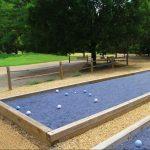

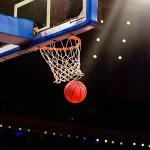



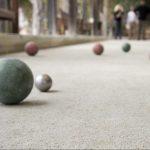

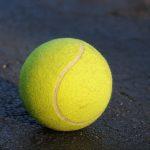
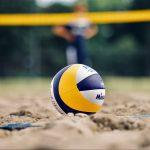


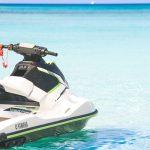
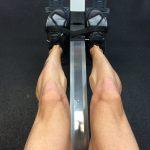




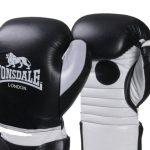
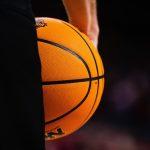




One thought on “Tennis Ball Size Guide and Dimensions”
Comments are closed.